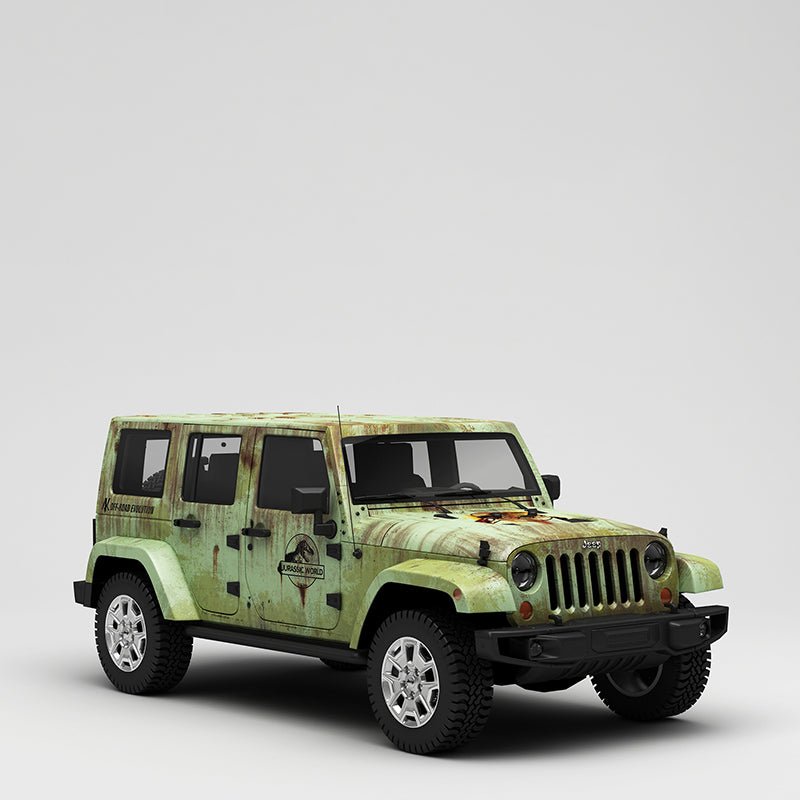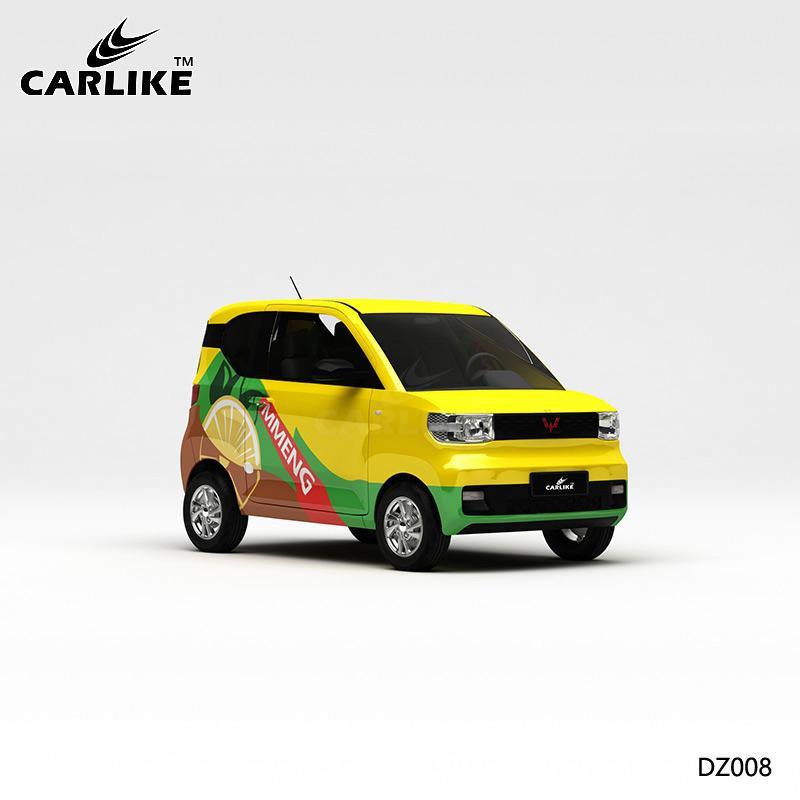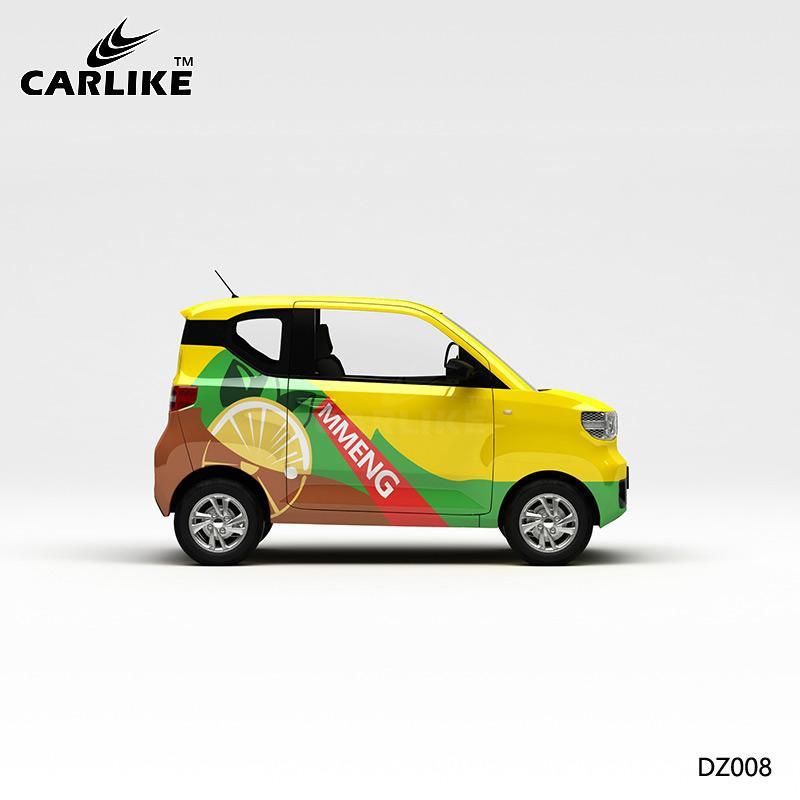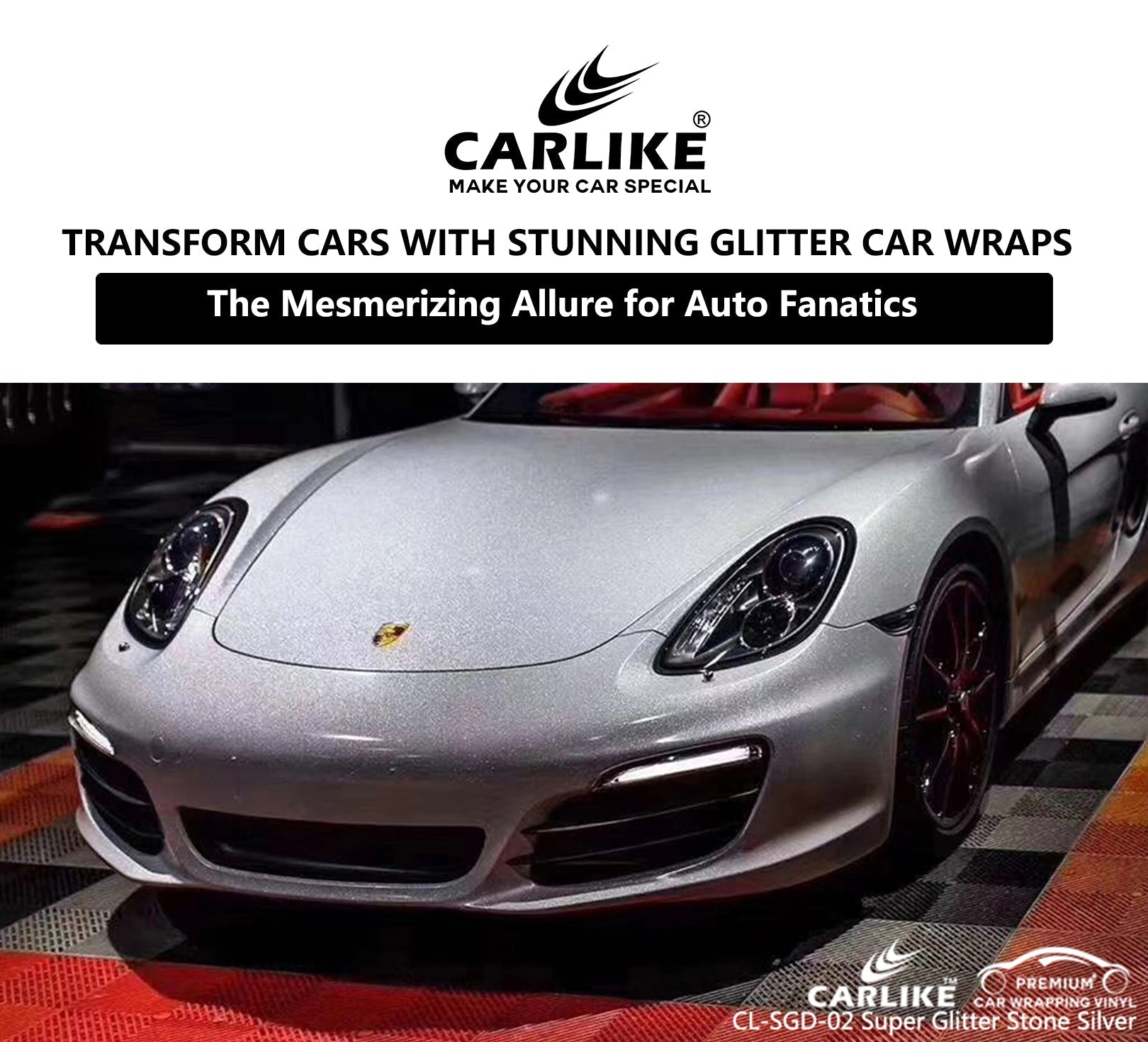Exploring Different Types of Custom Car Wraps: Matte, Gloss, Chrome, and More
Here are some different types of custom car wraps:
1. Matte Wraps: Matte wraps provide a smooth, non-reflective finish that can give your car a sophisticated and understated appearance. They are popular for luxury and sports cars.
2. Gloss Wraps: Gloss wraps offer a shiny and polished look, enhancing the vibrancy of colors. They are eye-catching and can make your car stand out on the road.
3. Chrome Wraps: Chrome wraps give your vehicle a mirror-like, metallic finish that creates a futuristic and attention-grabbing effect. They are particularly popular for show cars and exotic vehicles.
4. Satin Wraps: Satin wraps strike a balance between matte and gloss finishes, providing a subtle sheen and a unique texture that sets them apart from other options.
5. Color-Flip Wraps: Color-flip wraps change appearance depending on the angle and lighting, creating a dynamic and mesmerizing effect that shifts between different colors.
6. Carbon Fiber Wraps: Carbon fiber wraps imitate the look of real carbon fiber, adding a sporty and high-tech touch to your car without the expense of actual carbon fiber parts.
7. Brushed Metal Wraps: Brushed metal wraps simulate the appearance of brushed aluminum or steel, giving your car an industrial and modern aesthetic.
8. Chameleon Wraps: Chameleon wraps feature a color-shifting effect, where the color changes depending on the viewing angle, providing a captivating and unique appearance.

9. Camouflage Wraps: Camouflage wraps offer a military-inspired design, allowing you to give your car a rugged and adventurous look.
10. Custom Graphics Wraps: Custom graphics wraps enable you to add personalized designs, logos, or artwork to your car, making it truly one-of-a-kind.
11. Racing Stripes and Decals: Racing stripes and decals are classic additions to customize your car's appearance, often seen in motorsports and performance-oriented vehicles.
12. Textured Wraps: Textured wraps incorporate various patterns and textures, such as carbon fiber weaves, leather, or woodgrain, to add a touch of elegance and uniqueness.
13. Full Vehicle Wraps: Full vehicle wraps cover the entire surface of the car, allowing for complete transformation and creativity in design.
14. Partial Wraps: Partial wraps focus on specific areas of the car, such as the hood, roof, or side panels, offering a cost-effective customization option.
15. Branding and Advertising Wraps: Businesses use custom car wraps for branding purposes, turning their company vehicles into moving billboards to promote products or services.
Each type of custom car wrap offers its own distinct appearance and appeal, catering to a wide range of personal preferences and style choices.
Choosing the Right Materials: Vinyl, Carbon Fiber, and Other Options
Choosing the right materials for a custom car wrap is a crucial decision that can significantly impact the appearance, durability, and overall performance of the wrap. Here, we'll discuss some popular materials like vinyl, carbon fiber, and other options to help you make an informed choice:
1. Vinyl Wraps: Vinyl is the most common material used for custom car wraps. It comes in various finishes, including matte, gloss, satin, and metallic. Vinyl wraps are versatile, allowing for a wide range of design possibilities. They are durable, can withstand various environmental conditions, and are relatively easy to install and remove without damaging the car's paint. Vinyl wraps are also available in a vast array of colors, making it easy to achieve the desired look for your car.
2. Carbon Fiber Wraps: Carbon fiber wraps mimic the appearance of real carbon fiber but at a fraction of the cost. This material adds a sporty and luxurious feel to your vehicle. Carbon fiber wraps are lightweight and provide a unique texture that can enhance the car's aesthetics. They are a popular choice among car enthusiasts who want to give their cars a high-end look without the expense of real carbon fiber parts.
3. Brushed Metal Wraps: Brushed metal wraps replicate the look of brushed stainless steel or aluminum. They add an industrial and sophisticated touch to your car's exterior. These wraps are excellent for achieving a modern and distinct appearance. They are often used on specific parts of the vehicle, such as accents, trim, or hoods, to create visual contrast.



4. Chrome Wraps: Chrome wraps are highly reflective and offer a mirror-like finish. They are attention-grabbing and can give your car a show-stopping appearance. Chrome wraps are popular for creating a striking look, but they require careful maintenance to prevent visible scratches and fingerprints.
5. Color-Shifting Wraps: Color-shifting wraps use advanced technology to change colors depending on the viewing angle and lighting conditions. They create a captivating effect, as the color seems to transform before your eyes. Color-shifting wraps are unique and perfect for those who want a car that stands out from the crowd.
When choosing the right material for your custom car wrap, consider factors such as your budget, desired design, level of durability required, and the expertise of the installer. It's essential to work with a reputable and experienced professional to ensure proper installation and maximize the lifespan of your custom car wrap. A well-chosen material can transform your vehicle and make it a true reflection of your personality and style.
Is It Cheaper To Wrap Or Paint A Car
The cost of wrapping a car versus painting it can vary depending on several factors, including the size of the vehicle, the complexity of the design, the quality of materials used, and the expertise of the professionals performing the work. Let's break down the key points to consider when comparing the costs of wrapping and painting a car:
1. Material Costs: Wrapping a car typically involves using vinyl wrap material, which comes in various qualities and finishes. Higher-quality vinyl wraps tend to be more expensive. On the other hand, painting a car involves the cost of automotive paint and clear coat, which can also vary in price based on the brand and quality.
2. Labor Costs: Both wrapping and painting a car require skilled labor. The complexity of the design and the condition of the car's surface can influence the labor cost for either option.
3. Time: In general, wrapping a car can be quicker than painting it, which can result in lower labor costs. However, this can vary based on the size of the vehicle and the intricacy of the design.



4. Repair and Maintenance: Car wraps can be more forgiving when it comes to minor damages and scratches. If a section of the wrap is damaged, it can often be replaced without needing to redo the entire car. On the other hand, repainting a damaged area of the car might require blending the new paint with the existing paint, making it potentially more expensive.
5. Resale Value: A professionally painted car might retain its value better than a wrapped car, as a high-quality paint job can last for many years without significant fading or wear. Car wraps, while durable, are not as permanent and may require more frequent replacement, which could affect the vehicle's resale value.
In general, wrapping a car can be a more cost-effective option, especially for those who want to change the appearance of their vehicle temporarily or experiment with different designs. It can also protect the original paint from certain elements. On the other hand, painting a car might be a better long-term investment, especially if you want a permanent color change and are looking to maintain the vehicle's resale value.
Ultimately, the decision between wrapping and painting a car depends on your budget, the intended duration of the modification, and your preferences for the vehicle's appearance and longevity. It's essential to consult with professional car wrap and paint specialists to get accurate quotes and weigh the pros and cons of each option before making your decision.
How to Design a Custom Car Wrap
Designing a custom car wrap requires careful planning and attention to detail to create a stunning and visually appealing design that complements the vehicle's shape and style. Below is an explanation of the steps involved in designing a custom car wrap:
1. Vehicle Measurement and Template Creation: The first step is to obtain accurate measurements of the vehicle's dimensions and contours. This can be done through manual measurements or by using specialized vehicle templates available from wrap design software or manufacturers. Creating an accurate template ensures that the design fits perfectly on the car.
2. Conceptualization and Research: Before diving into the actual design, gather inspiration and conduct research. Look for other car wraps, artwork, patterns, and color schemes to get a sense of what you like and what might work well with your car's style. Consider the vehicle's make, model, and personal preferences while conceptualizing the design.
3. Choose the Right Design Software: To create a custom car wrap design, you'll need graphic design software that supports large format and vector-based artwork. Popular software includes Adobe Illustrator and CorelDRAW, which allow precise control over the design elements.
4. Start with the Key Elements: Begin the design process by placing essential elements such as logos, brand names, or key images on the vehicle template. These elements should be strategically positioned to ensure they remain visible and legible when the wrap is installed on the car.
5. Create a Visual Hierarchy: A well-designed car wrap has a clear visual hierarchy, guiding the viewer's eyes across the design. Emphasize the most critical elements while balancing the overall composition.
6. Balance and Proportion: Pay close attention to the balance and proportion of the design. Avoid cluttering the wrap with too many elements, and ensure that the design flows smoothly around the vehicle's contours.

7. Color and Contrast: Choose colors that not only reflect your brand or personal style but also ensure high visibility. High contrast color combinations are especially useful for catching attention. Be mindful of color psychology and how it may influence the viewers' perceptions.
8. Typography and Fonts: If your design includes text, select fonts that are easy to read, even from a distance. Avoid using too many font styles to maintain a consistent and professional look.
9. Incorporate Wrinkles and Folds: Remember that car surfaces are not flat; they have curves, edges, and contours. As you design, visualize how the graphics will align with these features and how the design will wrap around the car.
10. Review and Finalize the Design: Once you've completed the initial design, step back and take some time to review it. Make any necessary adjustments and seek feedback from colleagues or friends. Ensure that the design aligns with your vision and requirements.
11. Mockup and Presentation: Create a 3D mockup or a visualization of the design to see how it will look on the actual vehicle. This step helps you assess how the design interacts with the car's surface and identify any potential issues.
12. Printing and Installation Considerations: Before sending the design for printing, consult with the professional wrap installer or printing company to ensure that the design files are in the correct format and resolution. Also, take into account any seams, overlaps, and panel divisions during the printing and installation process.
Remember that designing a custom car wrap requires creativity, precision, and an understanding of the vehicle's contours. If you're not confident in your design skills, consider working with a professional graphic designer or a specialized car wrap design company to bring your vision to life.
FAQ for custom car wrap?
Q: How much does a custom car wrap cost?
A: The cost of a custom car wrap varies depending on the size of the vehicle, the complexity of the design, the quality of the vinyl used, and the expertise of the installer. Generally, it can range from a few hundred to several thousand dollars.
Q: Can I design my custom car wrap?
A: Yes, you can design your custom car wrap. However, it's essential to work with a graphic designer or use design software to ensure the design fits well with your vehicle's dimensions and contours.
Q: Can I wrap only part of my car?
A: Yes, you can choose to wrap the entire vehicle or only specific parts of it, such as the hood, roof, or side panels.
Q: Will a car wrap damage the paint underneath?
A: No, if the car wrap is professionally installed and removed following proper techniques, it should not damage the paint underneath. In fact, it can protect the original paint from minor scratches and UV rays.
Q: Can I remove a car wrap by myself?
A: While it is possible to remove a car wrap by yourself, it is recommended to have it removed by a professional to avoid damaging the paint or leaving adhesive residue.
Final Words
In conclusion, custom car wraps open up a world of possibilities for auto aficionados to express their individuality and style on the roads. From sleek matte finishes to eye-catching graphics, these wraps allow you to transform your vehicle into a rolling masterpiece that turns heads wherever you go. Embrace the art of design and unleash your creativity as you "Wrap It Your Way," turning your beloved ride into a true reflection of your personality. Whether you're a seasoned car enthusiast or a newcomer to the world of vehicle customization, custom car wraps offer an exciting and non-permanent option to stand out from the crowd.
Link List
Products
https://carlikewrap.com/collections/customized-vinyl-wrap
https://sinocarfilm.com/category/products/car-wrap-vinyl/customized-vinyl/
https://sinocarsticker.com/category/products/personalization-vinyl-wrap/
https://www.sinovinyl.com/customzied-camo-vinyl-wrap/
Blogs
The Price of Personalization: Decoding the Custom Car Wrap Cost for Car Enthusiasts
Wrap Your Dreams: 10 Inspirational Car Wrap Designs for Car Enthusiasts








